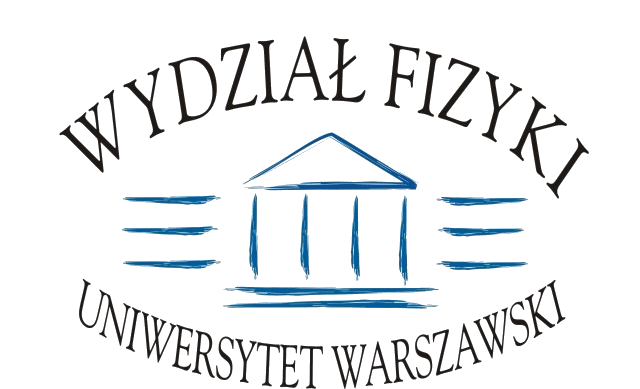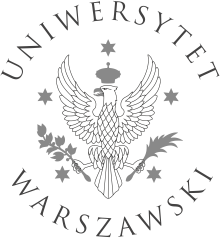Seminarium Teorii Oddziaływań Elementarnych
2006/2007 | 2007/2008 | 2008/2009 | 2009/2010 | 2010/2011 | 2011/2012 | 2012/2013 | 2013/2014 | 2014/2015 | 2015/2016 | 2016/2017
2014-11-24 (Poniedziałek)
Daniel Stolarski (CERN)
Emerging jets
I will describe a new collider object we have termed emerging jets. These can arise when there is a confining dark sector connected to the Standard Model by a TeV scale mediator, a scenario that is well motivated by dark matter considerations. The signature of an emerging jet is O(10) displaced vertices inside the jet each with different impact parameter, and a small number of prompt tracks. I will describe strategies that can be used to discover emerging jets even if they have very small cross sections.
2014-11-17 (Poniedziałek)
Tomasz Jeliński (Uniwersytet Śląski)
Yukawa unification in extended GMSB models
It is known that superpotential couplings between messenger sector and MSSM matter fields can significantly change phenomenology of the standard GMSB models. Those interactions not only give rise to A-terms and soft masses but also can lead to kinetic mixing between messengers and matter. In this talk, we shall discuss an example of unification model in which those effects play an important role.
2014-11-03 (Poniedziałek)
Janusz Kempa (PW Płock)
Cosmic rays in CERN 2014
The 18th International Symposium on Very High Energy Cosmic Ray Interactions (ISVHECRI 2014) was held at CERN in August. It focused on high energy hadron collisions of cosmic ray particles and related topics including all directions of very, and extremely, high energy cosmic ray studies with air showers. Highlights included the accelerator studies of hadronic interactions at very high energies and the interpretation of the cosmic ray data as well as the understanding of hadronic interactions from cosmic ray data. I will discuss the latest results from these studies including extensive air showers detected at TA, AUGER, TUNKA and IceCube.
2014-10-27 (Poniedziałek)
Rose Lerner (DESY)
The minimal curvaton-Higgs model
I will begin this talk by motivating curvaton models and the idea of minimal models of cosmology. I will then introduce the minimal curvaton-higgs (MCH) model, which is a minimal interpretation of the curvaton scenario with one real scalar coupled to the standard model Higgs boson. The standard model coupling allows the dynamics of the model to be determined in detail, including effects from the thermal background and from radiative corrections to the potential. I'll discuss thermal blocking of the curvaton decay, including preliminary results from lattice simulations. Next I will present the parameter space and predictions of the model. Finally I will discuss an attempt to quantify the 'naturalness' of the model by considering stochastic dynamics.
2014-10-20 (Poniedziałek)
Wojciech Kotlarski (IFT UW)
SUSY with R-symmetry - confronting EWPO and LHC constraints
I will discuss a complete next-to-leading order computation of the lightest Higgs boson mass, the W boson mass and muon decay in the minimal R-symmetric SUSY model. This model contains non-MSSM particles including a Higgs triplet, Dirac gauginos and higgsinos, and leads to significant new tree-level and one-loop contributions to these observables. I will show that the model can accommodate the measured values of these observables for interesting regions of parameter space, characterise these regions and provide typical benchmark points in agreement with experimental constraints.
2014-10-13 (Poniedziałek)
Bryan Zaldivar (Brussels U)
Simplified Dark Matter Models for LHC analyses
In this talk I will present the state of the art of Dark Matter searches at the LHC, focusing the attention on "model independent" analyses which are presently part of the agenda for the experimental groups in the next LHC run. The need for complementarity studies will be motivated, relating different experimental searches. Finally, some comments about ongoing related works will be presented.
2014-10-06 (Poniedziałek)
Sławomir Tkaczyk (FNAL, CERN)
Physics results from CMS in Run-1 and the detector upgrade plans
Recent physics results from the CMS experiment at the LHC using the full Run-1 dataset of 30 fb-1 will be presented. The large data sample delivered by the LHC allowed for exploration of many interesting questions related to understanding of the Electroweak Symmetry Breaking, and looking for hints of physics beyond the Standard Model. The increasing instantaneous luminosity and pile-up place new demands on the detectors and the readout system. I will discuss constraints which they pose and the plans to address them in the future years.
Stron 3 z 3






